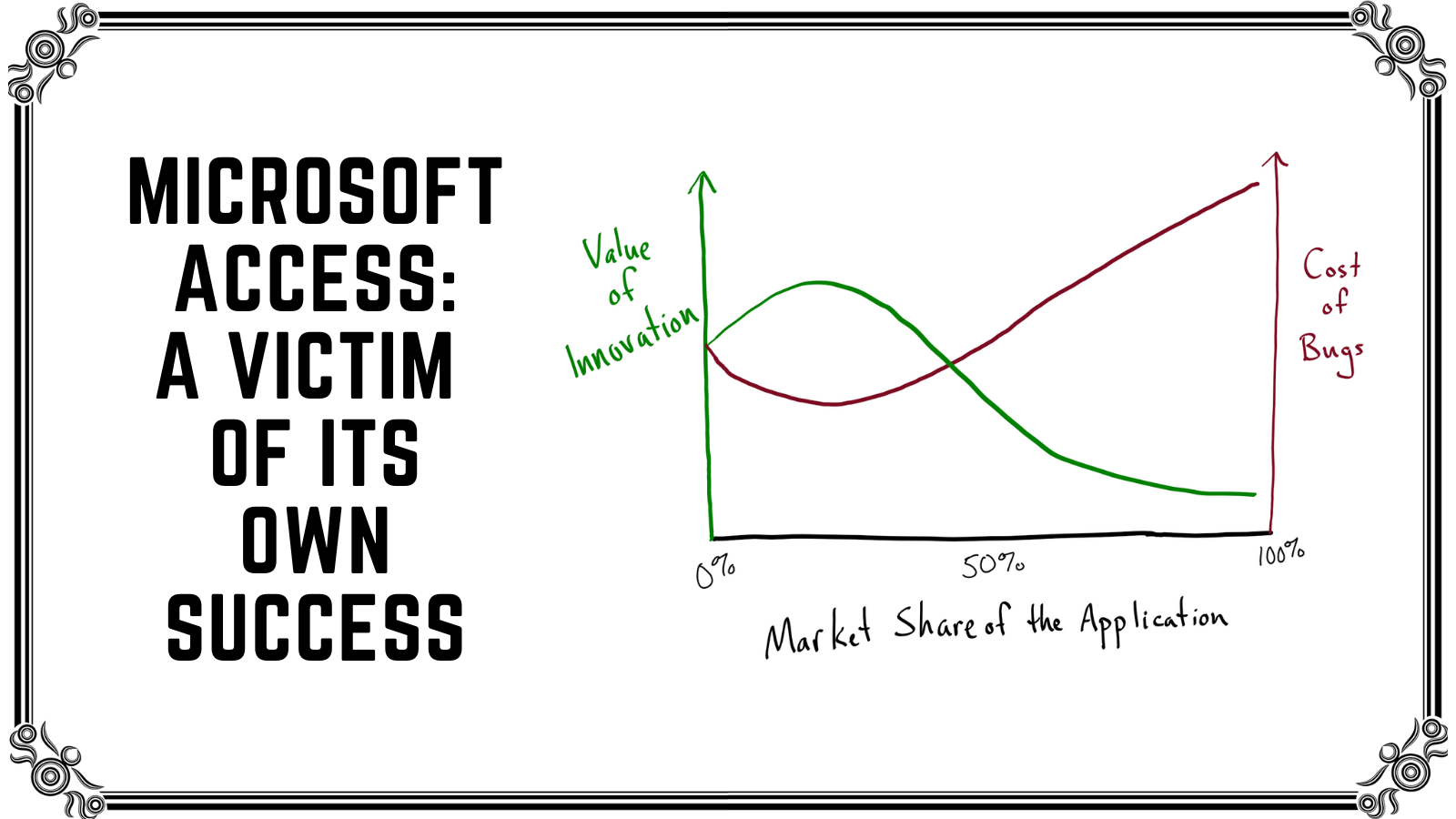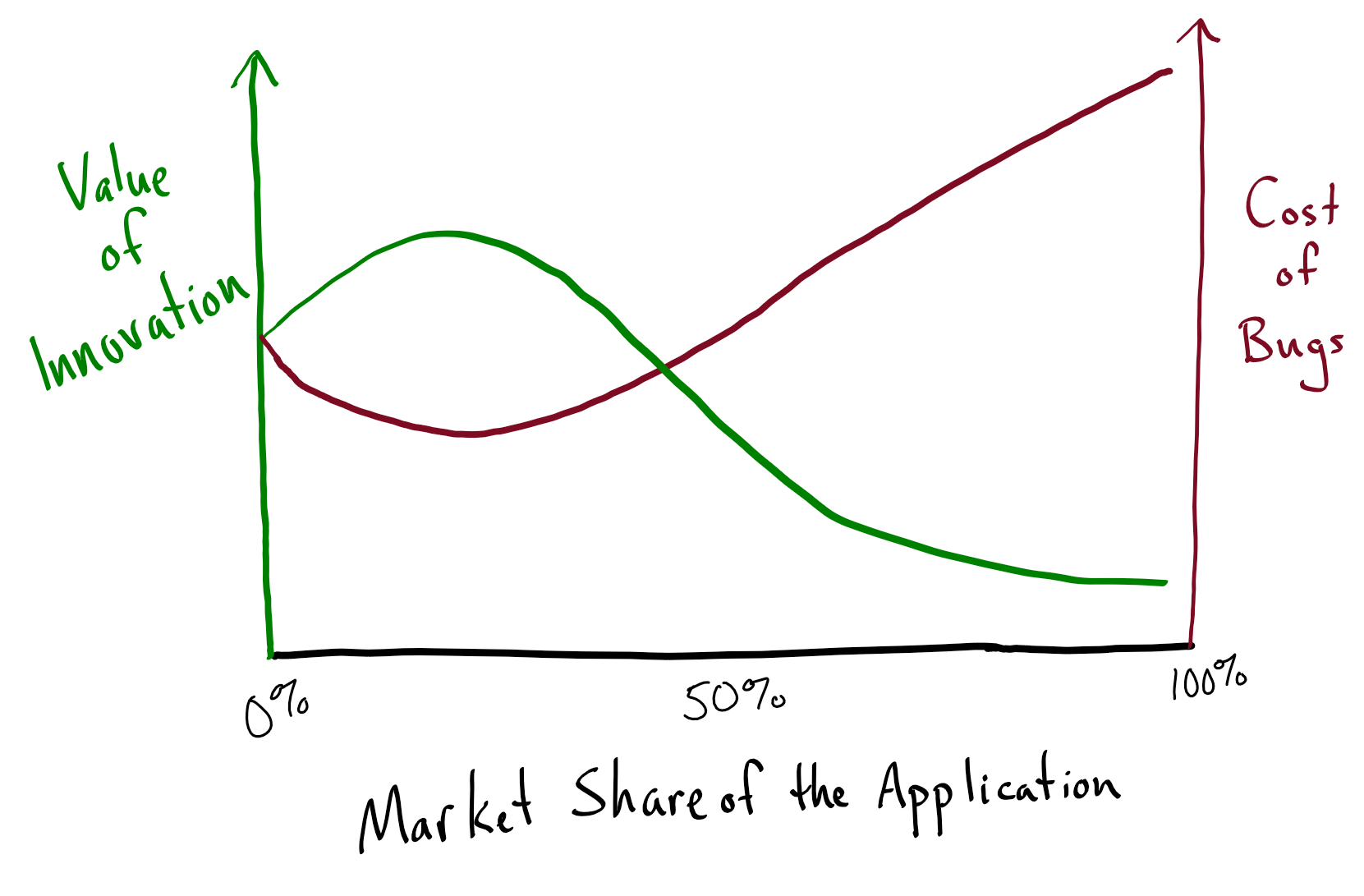Microsoft Access: A Victim of Its Own Success
Looking for bold new features in Microsoft Access? Don't hold your breath.

A couple of weeks ago, I included the following quote from a Boyd Trimmell article in my Week in Review:
On the Microsoft Access Blog, there is a comment from Clint Covington of Microsoft that stated "The Jet engine is a system component and making changes to it meant making changes to Windows. The new engine gives us more flexibility to innovate in the codebase and ship updates via Office."
I've been thinking a lot about this quote since then, and I think it helps explain what we're seeing in terms of development around the Microsoft Access platform.
MANY Business-Critical Applications Run on Microsoft Access
Microsoft knows this.
Like it or not, Microsoft Access has reached a level of maturity where it no longer makes sense to innovate new features. In the market of desktop database development environments, you have:
- Microsoft Access
- ...
- ...
- ...
- ...
- Microsoft Excel*
- ...
- ...
- FileMaker Pro
- ...
- ...
- ...
- ...
- ...
- Open Office Base
* Yes, Microsoft Excel gets abused as a "database" far more often than FileMaker Pro or Open Office Base are used as intended.
In other words, there's really nothing else that does what Microsoft Access can do on a Windows desktop. To be clear, I'm talking about Access in its role as a RAD tool for building front-end applications, not its other role as a back-end data store.
The thing is, when you have that much market share, you're no longer competing against other software–you're competing against yourself.
The Software Innovation Market Share Curve
If I've learned nothing else writing this blog, it's that hand-drawn graphs of dubious evidentiary value convey a crisp air of authority.
And so I present another one:

Software Launch
When you launch a new software product into the world, the value of innovation and cost of bugs are about equal.
Your software must be innovative enough that people try it, but not so buggy they immediately abandon it.
Building Momentum
This is the point in the graph where the green innovation curve is at its peak. It's also where the red "cost of bugs" curve reaches its nadir.
Once you've launched your minimum viable product (MVP), you need to provide a steady stream of new innovations to help build buzz and siphon customers away from your competitors.
It's expensive for your potential customers to move away from their existing software. They will need to migrate their data. They will need to learn the new system. They will need to train their staff.
At this stage, you better be offering those potential customers some compelling features to draw them over to your side. If your new features are shiny enough, these new users will live with a few bugs here and there. Users will expect to see some growing pains.
Or, as Admiral Farragut would say, "Damn the torpedoes! Full speed ahead."
Established User Base
By the time you reach the middle part of the graph where the red and green curves meet, you will have built up a loyal user base.
At this point, the only thing your users will agree on is that the software should continue working the way it always has. Any change you make will be met with resistance by some of your users, even if most are completely on board.
You'll want to continue innovating and adding new features. After all, that's how you attract new users. At this point, though, you also have to start worrying about too many bugs driving away your existing user base.
Dominating the Market
On the far right of the graph is where Access finds itself these days.
There are no more users left to woo with new features and innovations. This is the point at which the software development maintenance team adopts the ethos of the ancient Greek physician Hippocrates,
First, do no harm.
When you completely dominate the market, the relative value of new and innovative features is quite low. Those features help grow your market. What's the point if there's no market left to grow?
Beyond that, there's the fact that any new feature carries with it the risk of introducing new bugs. And new bugs are brutal at this stage, as they are about the only way you can motivate your now-entrenched user base to eat the lock-in costs associated with moving to a competitor or–more likely–out of the market altogether.
For Access users, that would mean moving to a web application or cloud-based no-code/low-code solution, such as Notion, Airtable, or Power Apps.
Of course, if the reason you are moving away from Access is because it's become a buggy product, chances are you won't be too eager to migrate to a different Microsoft software solution like Power Apps.
What Does This Mean For Access Developers?
The Bad News? Don't hold your breath for new features.
The Good News? Microsoft Access isn't going anywhere.
As was the case with Samuel Clemens, the reports of Access's demise are greatly exaggerated.
Access haters have been foretelling the death of Access for decades now. At some point, the haters will need to come to grips with the fact that Access is not going away.
And Access developers will need to come to grips with the fact that it's not getting much better, either.
Referenced articles


